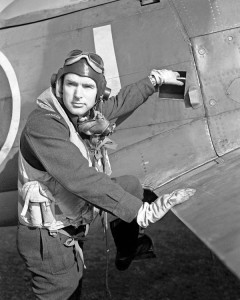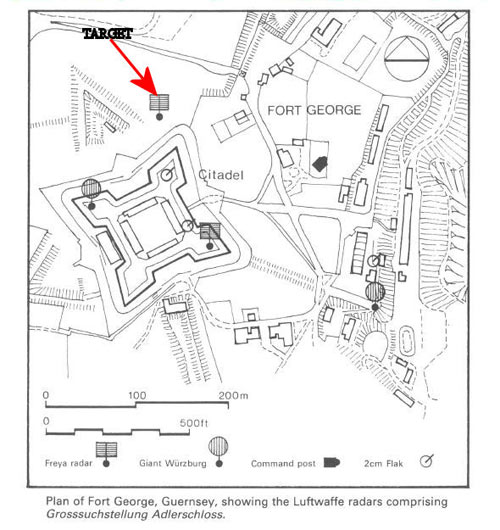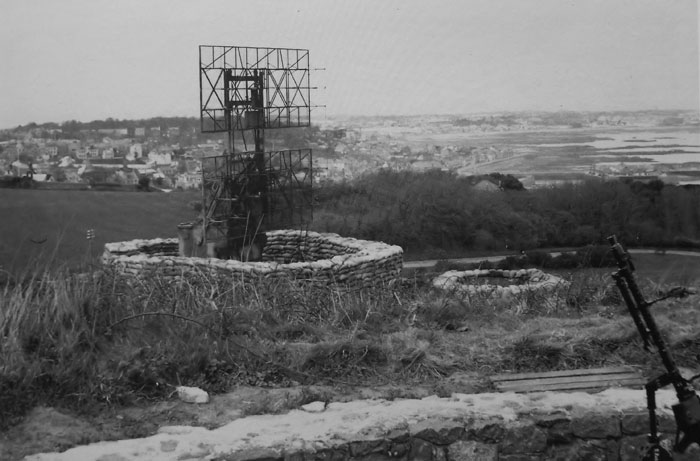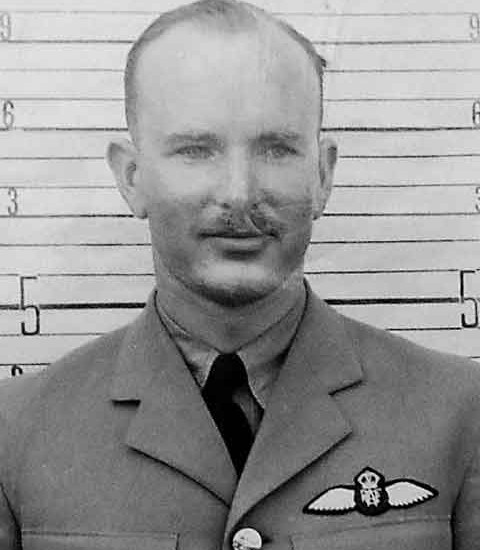SAVILLE, John Walton
- 34 years
- Canadian
- Flight Lieutenant
- J/8146
- Typhoon lb, MN210
- 5th June 1944
-
Runnymede Memorial
[Panel 244]
 This story relates to Flight Lieutenant John Walton Saville RCAF (Royal Canadian Air Force). John Walton Saville of Vancouver, British Columbia, Canada was born in April 1910 in Idle, near Leeds, Yorkshire, England, the son of William Saville, and of Florence Ilma Saville. The family moved Canada 1911 and in the years following John was joined by three younger sisters Joyce, Phyllis and Dorothy, all living in Vancouver, British Columbia, Canada. Flight Lieutenant Saville was from Vancouver where he worked as a garage foreman. He enlisted in Vancouver on 10 February 1941, having been selected to serve either a pilot or an observer. He did completed his basic military training at No. 2 Manning Depot in Brandon, Manitoba and then was sent to No. 6 Bombing and Gunnery School at Mountain View, Ontario (near Trenton) where he performed menial duties while awaiting for a training billet to open. This time would not have been wasted as it would allow him to become more familiar with the RCAF environment and be better prepared for his formal courses. On 22 April 1941, Aircraftsman Class 1 Saville was sent to No. 2 Initial Training School in Regina, Saskatchewan. Besides learning about the RCAF and the basics of flight, he was tested on the Link Trainer where he performed sufficiently well that he was selected to be a pilot. He completed his basic pilot training at No. 2 Elementary Flying Training School at Thunder Bay, Ontario and then learned the intricacies of military flying, such as precision navigation and formation flying, at No. 11 Service Flying Training School at Yorkton, Saskatchewan, on course 34, training from 26 July graduating on 7 October. His flying skills were of a high calibre, which resulted in him being commissioned as a pilot officer on graduation.
This story relates to Flight Lieutenant John Walton Saville RCAF (Royal Canadian Air Force). John Walton Saville of Vancouver, British Columbia, Canada was born in April 1910 in Idle, near Leeds, Yorkshire, England, the son of William Saville, and of Florence Ilma Saville. The family moved Canada 1911 and in the years following John was joined by three younger sisters Joyce, Phyllis and Dorothy, all living in Vancouver, British Columbia, Canada. Flight Lieutenant Saville was from Vancouver where he worked as a garage foreman. He enlisted in Vancouver on 10 February 1941, having been selected to serve either a pilot or an observer. He did completed his basic military training at No. 2 Manning Depot in Brandon, Manitoba and then was sent to No. 6 Bombing and Gunnery School at Mountain View, Ontario (near Trenton) where he performed menial duties while awaiting for a training billet to open. This time would not have been wasted as it would allow him to become more familiar with the RCAF environment and be better prepared for his formal courses. On 22 April 1941, Aircraftsman Class 1 Saville was sent to No. 2 Initial Training School in Regina, Saskatchewan. Besides learning about the RCAF and the basics of flight, he was tested on the Link Trainer where he performed sufficiently well that he was selected to be a pilot. He completed his basic pilot training at No. 2 Elementary Flying Training School at Thunder Bay, Ontario and then learned the intricacies of military flying, such as precision navigation and formation flying, at No. 11 Service Flying Training School at Yorkton, Saskatchewan, on course 34, training from 26 July graduating on 7 October. His flying skills were of a high calibre, which resulted in him being commissioned as a pilot officer on graduation.While many pilot graduates were being sent overseas, P/O Saville remained in Canada. The RCAF was building up its Home War Establishment. P/O Saville was posted to the newly-formed No. 123 Squadron (Army Cooperation) which provided close support and reconnaissance training to the Canadian Army’s 4th and 7th Divisions. While with the squadron he also served as a staff officer at Eastern Air Command and attended the Junior War Staff Course at Royal Military College in Kingston, Ontario.
In November 1943, No. 123 Squadron was selected as one of six Canadian-based fighter squadrons to be sent overseas. The squadron was re-designated No. 439 Squadron and Saville, who was now a flight lieutenant, was with them when its personnel arrived in the UK on 27 December 1943. The unit No. 439 also changed to a Fighter Bomber Squadron and the whole squadron was at Wellingore, England where it became known as Tiger Squadron. Saville was appointed as Commander of “B” flight.

RAF photographic evidence on 4 June 1944 had suggested that the radar site at Fort George had only been three-quarters destroyed by 439 Squadrons bombing raid on 3 June 1944, with one Freya Radar in the north-eastern corner having escaped damage, which was in a small sandbagged position. In fact they had not damaged any of the radar at Fort George, although there was significant damage inflicted around the fort, the Würzburg and both Freya were still operating fully. No knowing this the RAF were committed to finish the job and knock out this alleged remaining set, they had to attack it again, but bad weather prevented an attack on 4 June and so 439 Squadron were ordered to attack it the following day. 439 Tiger Squadron were to set out at 08:20 on the 5th with the usual formation of eight Typhoons. To get the aircraft ready, the armourers had to work late through the night in a “discouraging drizzle” preparing the aircraft and their bomb load.
Reports for 5 June 1944, suggest the weather was cloudy all morning with a fairly strong breeze becoming milder in the afternoon with scattered cloud. The eight Typhoon Mark Ib’s, took of on time from Hurn, Dorset each carrying two nose-fused (instantaneous) 500 lb high capacity bombs. The squadron led by Saville in aircraft number MN210, flew against this highly defended target, falling into line astern they descended in a long dive from 11,000ft to 3,000ft in two bomb runs first from the north east and then across the target in an easterly direction. All sixteen of the bombs appeared to burst on or near the target itself, however a large explosion was reported in the sea just offshore and at the time it was believed to have been a rogue bomb. However Flight Lieutenant Saville’s aircraft was not seen after the second dive and it was later presumed that his aircraft had been hit by the intense flak and he had failed to recover from the dive and that was the large splash observed by the other pilots. The Flak was certainly heavy that day and ironically another aircraft nicknamed “Flak-bait” piloted by Flying Officer Stelter, was struck in the radiator by a heavy chunk of shrapnel.

Freya Radar
With their bombs all dropped by the remaining aircraft after circling to see any traces of wreckage from Saville’s aircraft, they came under intense Flak and the aircraft were forced to head back to Hurn. Immediately upon their return, a section of four aircraft led by Flying Officer Burton was dispatched on an air sea rescue mission, to search for traces of the missing aircraft. The search was unsuccessful. Saville at the age of 34 was the Squadron’s first member to be lost as a result of enemy action, an it was presumed he was killed on impact.
Regrettably the radar was not knocked out and was able to confirm both aircraft and shipping movements on D-Day to German forces on the coast of Normandy. Saville’s crash site was not located until the mid 1960’s by Richard Keen, it is only 200 yards from Castle Cornet and following this in the 1970’s members of the Guernsey Nautical Archaeology Team (GNAT) conducted a survey of the site confirming it as Saville’s aircraft and it was subsequently listed as an official war grave by the Canadian Government.






